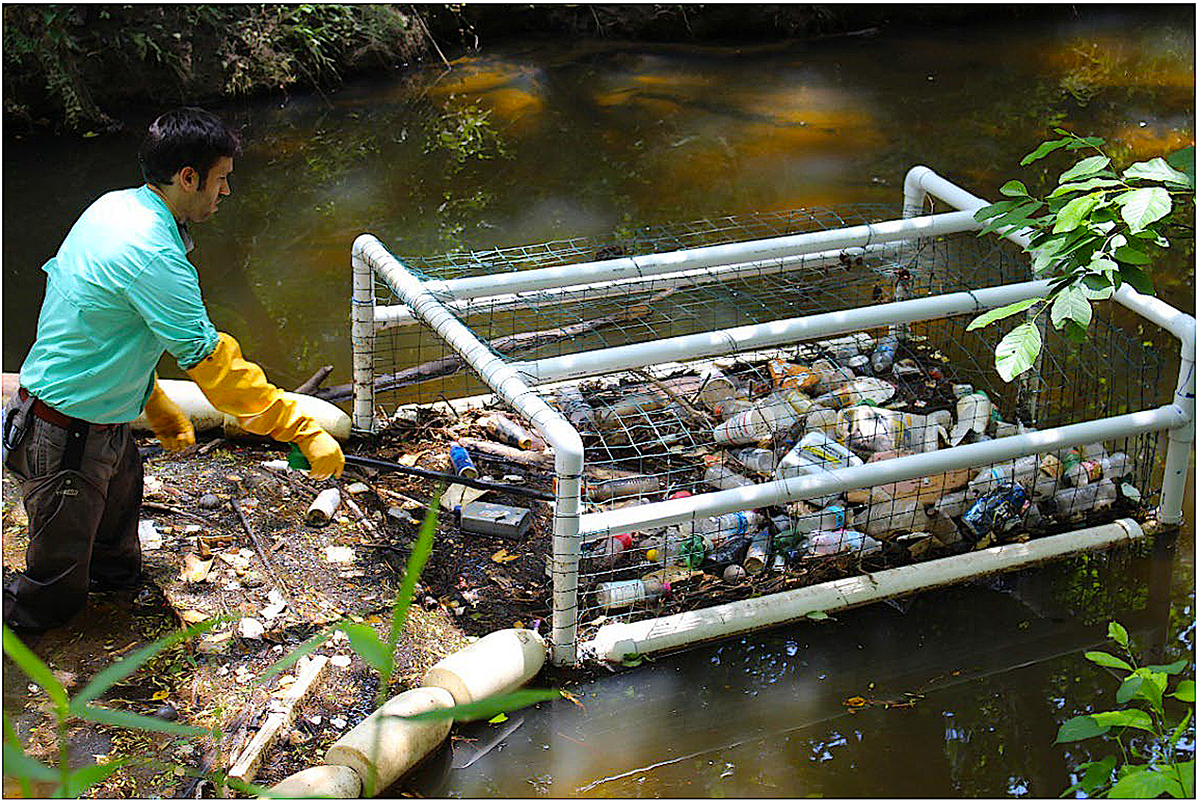Second of two parts
HAMPSTEAD – Andy Wood gently lifted the broad spatterdock leaf that was floating on the surface of the water. He turned it over, revealing five dime-sized circles of yellow spots.
Snail eggs.
Supporter Spotlight
“We’re going to have a baby boom,” Wood said, a broad smile spreading across his face. “In a couple of weeks, we’ll be crawling with snails.”
Wood can be forgiven for beaming like an expectant father. For 20 years, he has searched the ponds and creeks of the southeast N.C. coast looking for the magnificent ramshorn snail, a once common creature of the lower Cape Fear River basin. It has slowly disappeared, though, and Wood has taken it upon himself to save them from extinction.
He raised them first in fish tanks and then in his sons’ wading pool. Those simple beginnings have eventually led to this: Seven large, circular plastic tanks in the woods of Pender County shaded and stocked with native plants to mimic the snail’s natural habitat.
Wood figured he may now have as many as 1,000 snails inching along just below the surface. Some Wood even knows on sight. He plucked one particularly large specimen from the underside of a leaf. Green algae grew on its rust brown shell.
Supporter Spotlight
The emotional toll of being The Keeper of a Species has also been high. All that remain of the snail on God’s green Earth may be in these tanks, one mishap away from oblivion.
“If it is truly extinct in the wild, the only reason it’s around is because of my work. That’s pretty cool,” said Wood, a brief smile quickly disappearing. “But that also means this is it, and that’s worrying.”
It’s the reason Wood prefers to keep the location of his snails a secret. People are people, after all. Some are vindictive, others just plain mean. A few may simply hate snails. Who knows? Wood figures it’s best to keep it all as quiet as possible.
A bumper crop of babies buoys the spirit but that just means there will be more to lose if disaster strikes. A more permanent solution seems to be in order.
Help On the Way
The U.S. Fish and Wildlife Service may provide one.
He acknowledges, though, that the snail has no long-term future in his tanks and that the federal law is all we have to work with. “We have to find habitat where the animal can be reintroduced where we’re assured of protection against saltwater,” Wood said.
Until then, having a few more captive breeding programs would lessen the chance of outright disaster and ease Wood’s worries. Toward that end, Wood earlier this year gave 40 snails to Jay Levine, a professor at N.C. State University who runs the vet school’s Aquatic Epidemiology Conservation Lab, known less elaborately in that circle as “the mussel barn.”
Levine reports that the snails are fine. He, too, expects a baby boom. “They are doing very, very well,” he said. “They seem to enjoy the water supply and what we feed them.”
Little is known about the snail, and Levine plans to fill the gaps with research into its genetics, reproduction and sensitivity to salt and pH levels. The answers should help in choosing the best sites for reintroduction.
Another breeding program was started at a state fish hatchery but it has had problems so far.
It’s the Habitat, Stupid
Soaring temperatures drove us from the snail pools. We were seated in the cool of Wood’s office surrounded by the accruements of a biologist – specimen jars full of bugs, skulls and bones of assorted critters, birds’ nests, spider webs and books that spill out of their shelves.
Wood has a hard time explaining how he and magnificent ramshorn came all this way together. “I’m not sure I know why I’m so obsessed,” he said. “The snail is one of the rivets holding the planet together.”
He stopped and grimaced.
“I know that’s a tired metaphor, but the snail is an indicator species,” he said.
It disappeared because its habitat disappeared. Dredging and altered landscapes haven’t been kind to the snail, Wood said. Accelerated sea-level rise because of global warming reduces even more the natural niches hospitable to snails.
“It’s not the snail we should be talking about. It’s the swamps we should be talking about,” Wood said. “The snail is the Lorax. It’s saying we better do something.”
Levine is thankful that someone did. “Andy is an environmental hero from my standpoint,” he said. “He was interested in the snail because of what it is. That he worked all these years to save it is remarkable.”
“Thank God for Andy,” Adams said.Bill Adams knows he made the right call when he phoned Wood in 1992. A biologist at the time for the Army Corps of Engineers, Adams first alerted Wood to the snail’s grim future and persuaded him to start breeding them.
He may now have a more direct line to do so. He left the Corps and became a preacher. Adams is now the associate pastor of Wesley Memorial United Methodist Church in Wilmington. “I worked in the bureaucracy for a long time to try and fix this. I couldn’t,” he explained. “The only way to change this is to change people’s hearts and the way they do things.”
Regardless of the snail’s future, the magnificent ramshorn and Andy Wood are forever intertwined. At least that‘s how Sarah McRae sees it.
“It’s a wonderful part of his life and he truly enjoys it,” she said “It’s who he is.”







